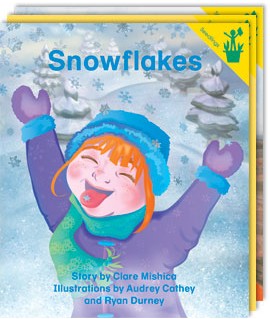The Benefits of Celebrating Holidays in the Classroom
Celebrating holidays in the classroom is fun and exciting, but it can also be very educational and culturally valuable for students. Especially in diverse communities or schools with English language learners, celebrating your students’ cultures and observed holidays can help everyone feel respected and included.
But, it can be tricky to know just what you can and can’t discuss and which holidays you should include in your lessons. Here are our tips on what to cover, how to incorporate the holidays into your lesson plans, and more!
Should You Celebrate Holidays in the Classroom?
In 1971, the Supreme Court case Lemon v. Kurtzman declared that public schools could not receive government funding if they taught religious subject matter. Since the decision does not speak to holidays specifically, most schools have continued to celebrate holidays in the classroom, but some have employed stricter guidelines to ensure the lesson content is appropriate and does not jeopardize their funding.

These days, many public schools use the First Amendment Center’s “Finding Common Ground” as their academic guide. While we suggest reviewing their recommendations in full, here are some general rules:
- Focus on the historical and cultural impacts, not the religious influence.
- Encourage awareness, understanding, and inclusion, not the practice of or devotion toward any religion.
- Celebrate holidays from a variety of cultures, not just one.
- Don’t champion or push the celebration of one holiday over another.
- Set an example for students: be inclusive and eager to learn.
- Be open to answering questions from students and put in the time to research the answers as needed.
Why Should Students Learn About Holidays?
Many educators have fought to continue celebrating holidays in the classroom because they see firsthand the value these lessons bring to their students. Holidays can open doors to talking about different cultures and languages. They can also help teach important lessons about kindness, gratefulness, and selflessness.
Also, since the public school schedule is largely centered around Christian and Jewish holidays, many students may end up attending school on holidays that are important to them and their families. Recognizing these holidays in the classroom can help these students celebrate and share a part of their cultures while they are in school. Celebrating is a great way to be an inclusive and culturally responsible teacher, especially if you have ELLs in your classroom or live in a diverse community.
6 Tips for Incorporating Holidays in Your Lessons
Check out our six tips for celebrating holidays in the classroom in an inclusive and appropriate way.
1. Know Your School’s Holiday Policies
Since there is no official ruling on celebrating holidays in the classroom, check with your administration or fellow teachers before planning your lessons. Some schools may place no limit on holiday discussion while others may ask teachers to skip lessons on holidays entirely.
You may also want to take into account your own personal comfort level as well as what your particular class can handle. Some teachers simply read a story aloud about each holiday while others dive in with open discussions and hands-on experiences. There is no right or wrong way to celebrate, as long as you work to foster an inclusive and accepting classroom environment.
2. Get to Know Your Students
When planning how to incorporate holidays into your classroom, start by selecting holidays that are significant to your students and their cultural backgrounds.
Kyleen Gray writes, “Knowing and learning about classmates’ and teachers’ cultural backgrounds, religions, families, and traditions at the beginning of the school year reduces fear and increases empathy. It also creates a platform where students can ask questions and break down stereotypes.”
Consider sending home a letter at the beginning of the year, inviting family members to share their holiday traditions with the class. This is a great way to promote parent involvement and cultural awareness.
Community-building isn’t just for the beginning of the year. Help students get to know each other (and their home culture) better by incorporating activities like the ones below:
Identity Collage
Have students create a collage to represent themselves or their culture. They can create their collage with physical items or use apps, like Canva, to create a digital presentation.
Three 3’s in a Row
A variation on Bingo, have students interact with each other to respond to assigned prompts. Create a 3×3 grid and include prompts designed for students to get to know each other. Sample questions include:
- How many places have you lived?
- Where have you traveled?
- What’s your favorite pastime?
- What’s your favorite holiday?
- Do you play sports?
- What’s your favorite subject in school?
- What’s your cultural background?
- How many people are in your family?
- Do you have any pets?
- What’s your favorite food?
Have students walk around the room asking their peers to answer one of the questions.
Daily Meetings
For students with emerging literacy skills, you can adapt the activity above. Incorporate meaningful discussion into your daily meetings with thoughtful prompts. Instead of focusing on one specific holiday, ask questions about their traditions. Possible questions might include:
- What is your favorite part of winter/summer/spring/fall?
- What is your favorite smell this time of year?
- What’s your favorite holiday?
- What’s one food you want to eat this month?
- What is the best gift you have ever been given?
- What is the best gift you have ever given to someone else?
3. Do Your Research
Part of honoring diversity in your classroom is teaching about holidays you don’t celebrate. This means you’ll need to do your research carefully to ensure that you represent each holiday accurately.

Check multiple sources for the most comprehensive view of the history, traditions, and meaning behind the special day. And don’t be afraid to look for primary resources within your school. You may be surprised at the number of teachers or administrators who can give you a firsthand account of the holiday in question. Your school librarian may also be able to provide resources for you and your students to use in your research.
Additionally, make sure that your classroom library offers representation of your students’ home cultures. Well-stocked classroom libraries with high-quality literature can also introduce students to new cultures and perspectives throughout the school year.
4. Focus on a Lesson or Theme
Celebrating your students’ cultures is a great way to embrace diversity, but it’s also a chance to honor the commonalities that bring us together. Focusing on a common theme or value that a holiday represents can help keep your discussions secular and educational. For example, when talking about Christmas, focus on giving and kindness rather than Santa or the religious implications of the special day. When discussing Ramadan, talk with students about mindfulness and reflection.
Your job is to make students aware of the many cultures around them and to help them find commonalities among themselves and those they may view as different from themselves. These overarching themes and lessons will appear in holidays across the board, which can help bring greater meaning to your lessons.
5. Make It Educational and Immersive
You can create lesson plans in all subjects around the holidays that will make your lessons both meaningful and memorable for students. Check out some of these ideas for inspiration:
- Listen to music related to the holiday between lessons.
- Look at historical photos from the holiday and have students make up their own stories about what is taking place.
- Include holiday premises in mathematical word problems.
- Perform a science experiment: test which fruits and vegetables dye Easter eggs best or explore how light and shadow work while celebrating Diwali.
- Play a vocabulary game with holiday words.
Activities like these will help you balance fun and games with educational content to make your lessons both impactful and engaging.

6. Celebrate Year Round
Many schools only acknowledge the diversity of holidays each December when they sing songs or try foods traditionally associated with Christmas, Hanukkah, and Kwanzaa. But having a culturally-aware, inclusive classroom means recognizing that for many cultures, there are significant holidays year round.
For example, for many Jewish people, Passover is a more significant holiday than Hanukkah, but Hanukkah is the Jewish holiday that teachers often cover since it occurs near Christmas. Do your research, keep an open mind, and speak with your students. You’ll likely find that there are ways to celebrate diversity all year long.

This leveled collection of readers covers a range of weather- and season-related topics, from frigid snow to warm sun rays.
View Product →This blog was originally published on November 10, 2020. It was updated on November 13, 2023.

